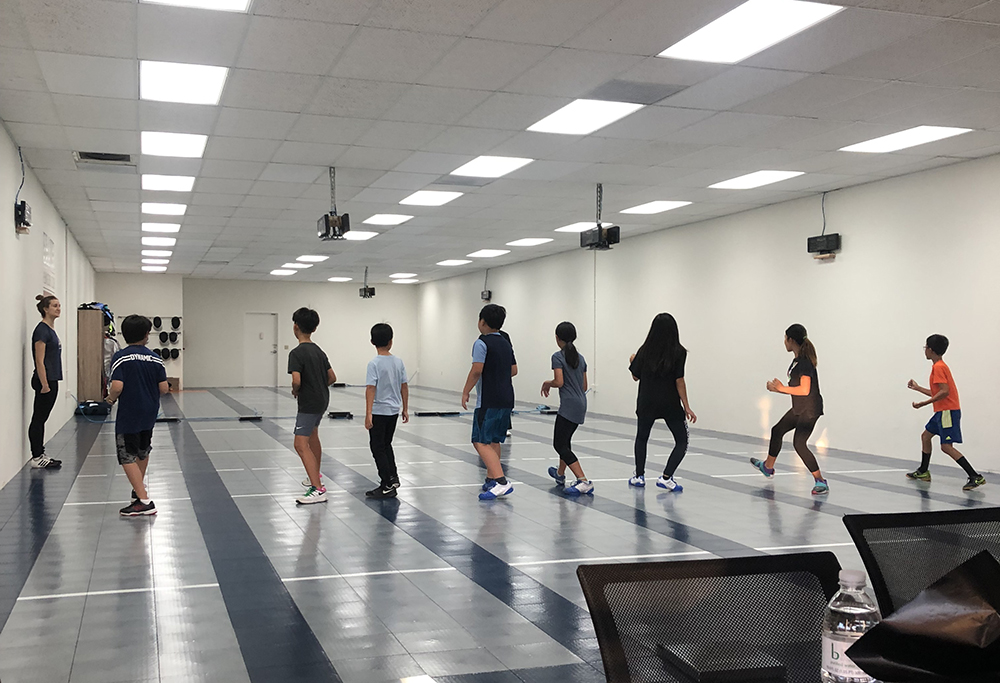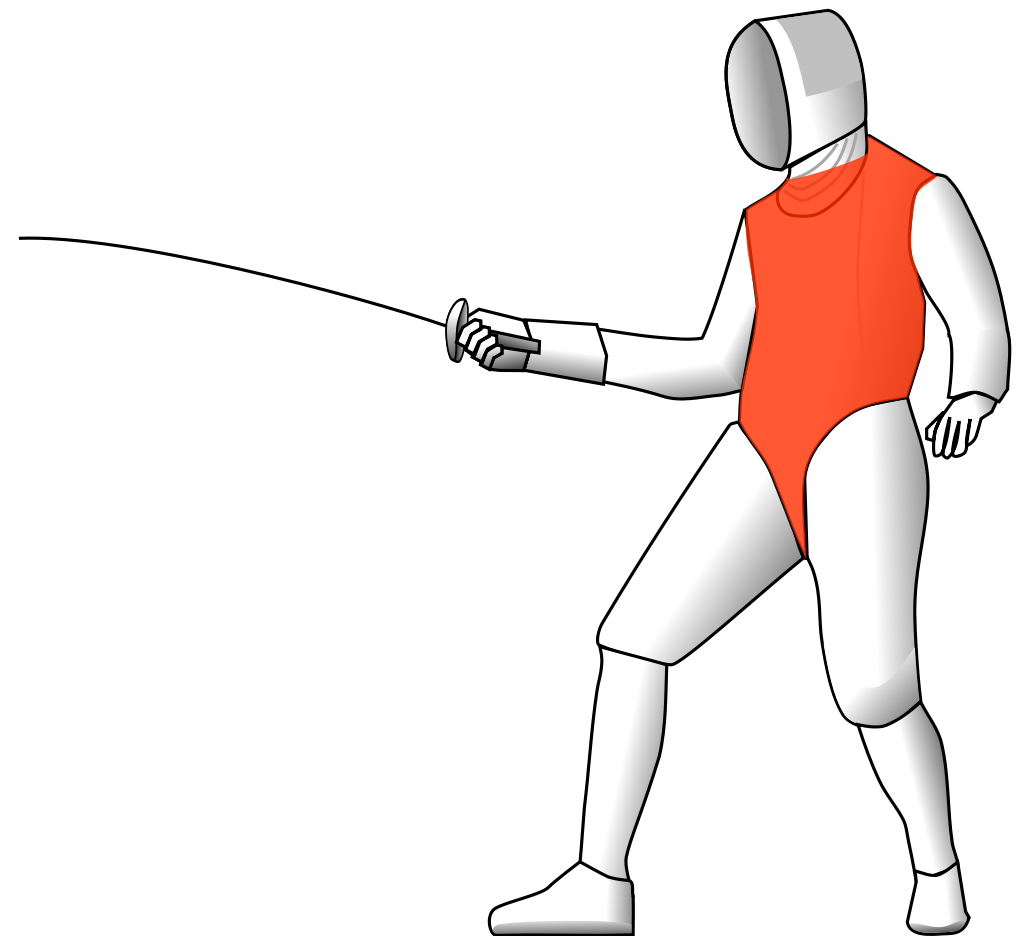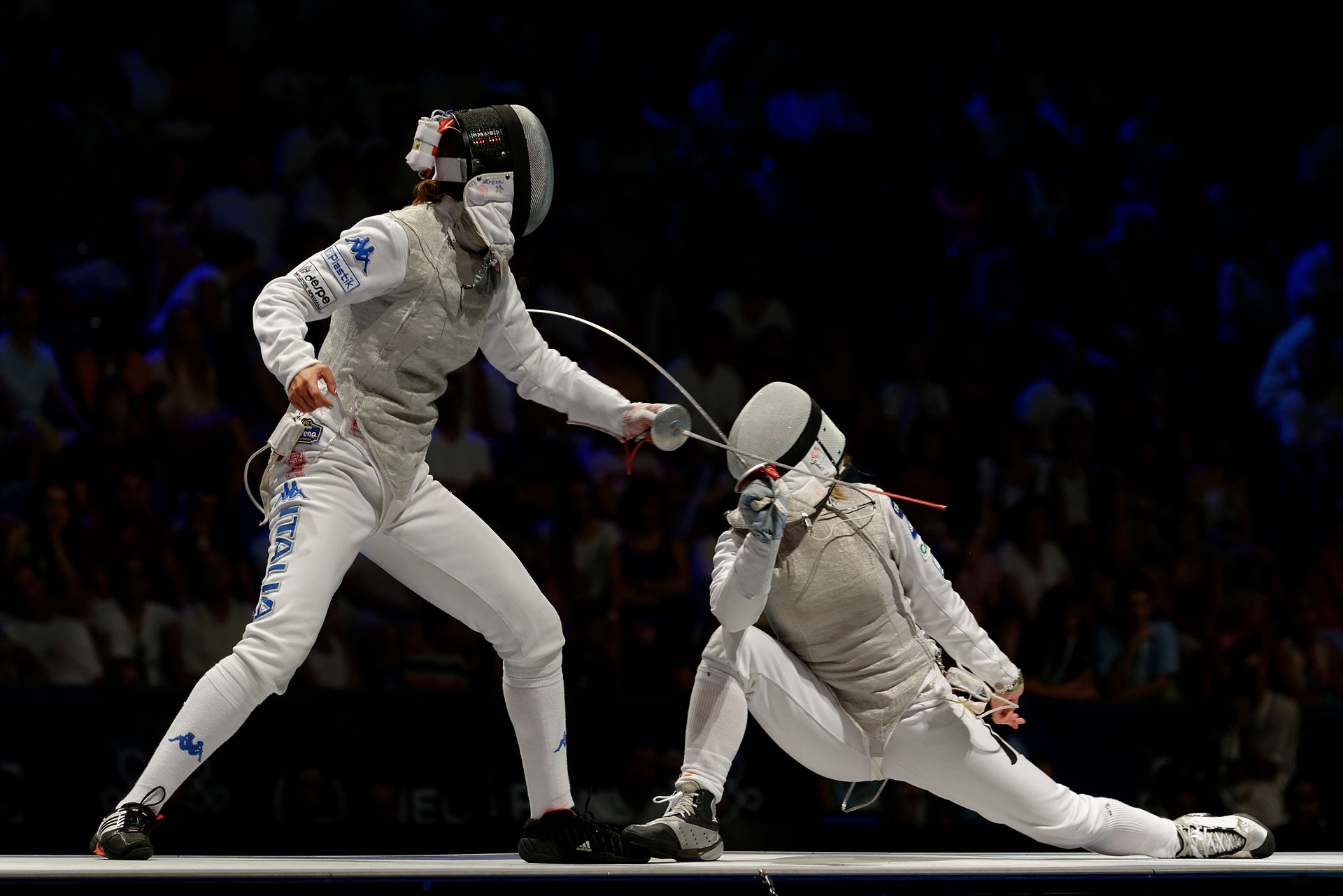About Fencing
Fencing is a group of three related combat sports. The three disciplines in modern fencing are the foil, the épée, and the sabre (also saber); winning points are made through the weapon’s contact with an opponent. A fourth discipline, singlestick, appeared in the 1904 Olympics but was dropped after that, and is not a part of modern fencing. Fencing was one of the first sports to be played in the Olympics. Based on the traditional skills of swordsmanship, the modern sport arose at the end of the 19th century, with the Italian school having modified the historical European martial art of classical fencing, and the French school later refining the Italian system. There are three forms of modern fencing, each of which uses a different kind of weapon and has different rules; thus the sport itself is divided into three competitive scenes: foil, épée, and sabre. Most competitive fencers choose to specialize in one weapon only.


Our Weapon
Foil
A foil is one of the three weapons used in the sport of fencing, all of which are metal. It is flexible, rectangular in cross section, and weighs under a pound. As with the épée, points are only scored by contact with the tip, which, in electrically scored tournaments, is capped with a spring-loaded button to signal a touch. A foil fencer’s uniform features the lamé (a vest, electrically wired to record hits in such cases), a jacket (made of strong cloth covering the groin area, chest and arms), a glove, so called knickers (in the US or breeches in UK), long socks (to prevent damage to shins by foils), shoes (generally light and rounded and with good grip), an ‘under-arm protector,’ or more accurately, a ‘Plastron’ (strong cloth half top with no seam across the armpit, worn under the jacket), a mask (metal mesh with cloth ‘bib’). For women, young children and all who choose, a chest protector (a strong stiff plastic plate protecting the upper chest area), and the foil.

Target area for foil

